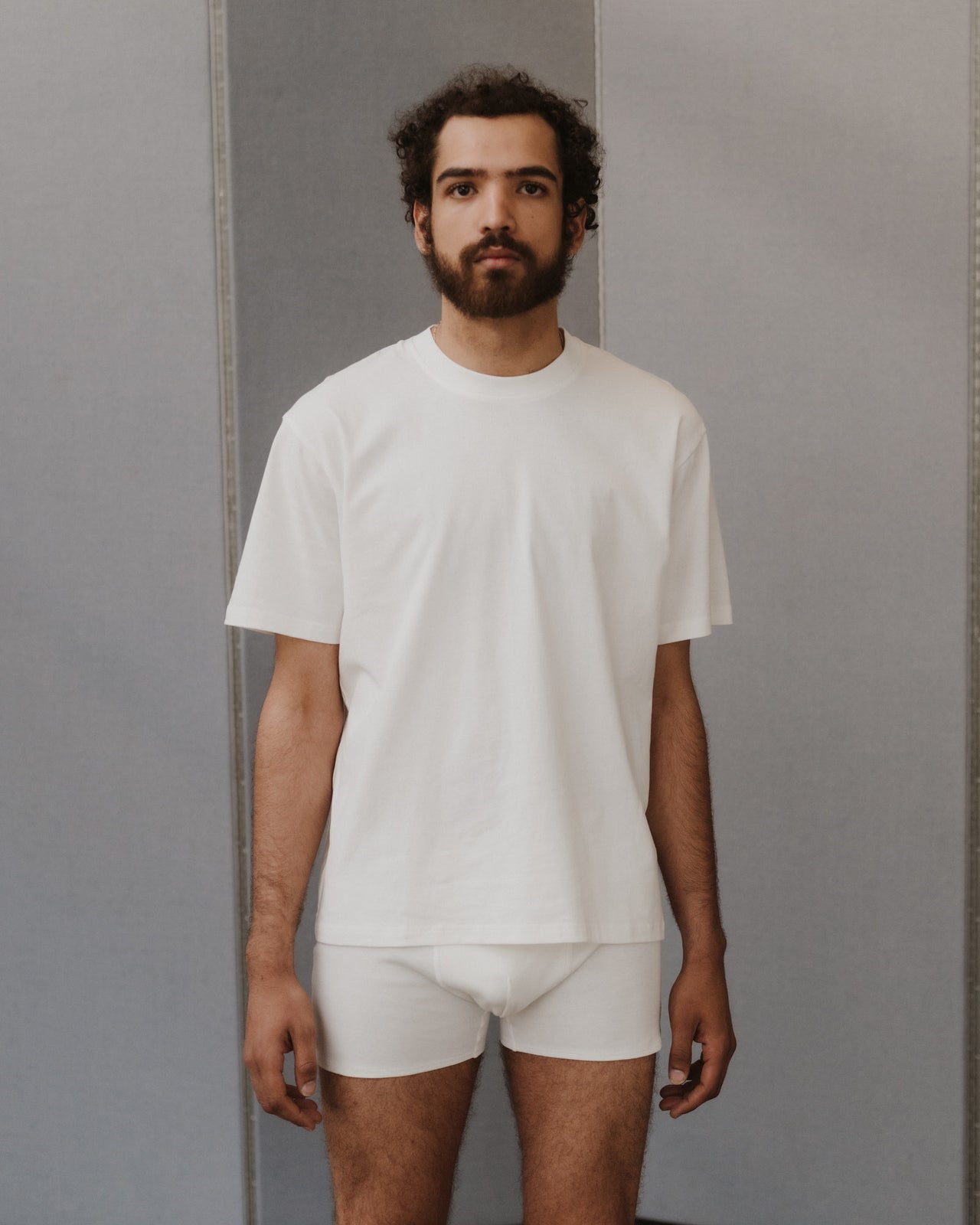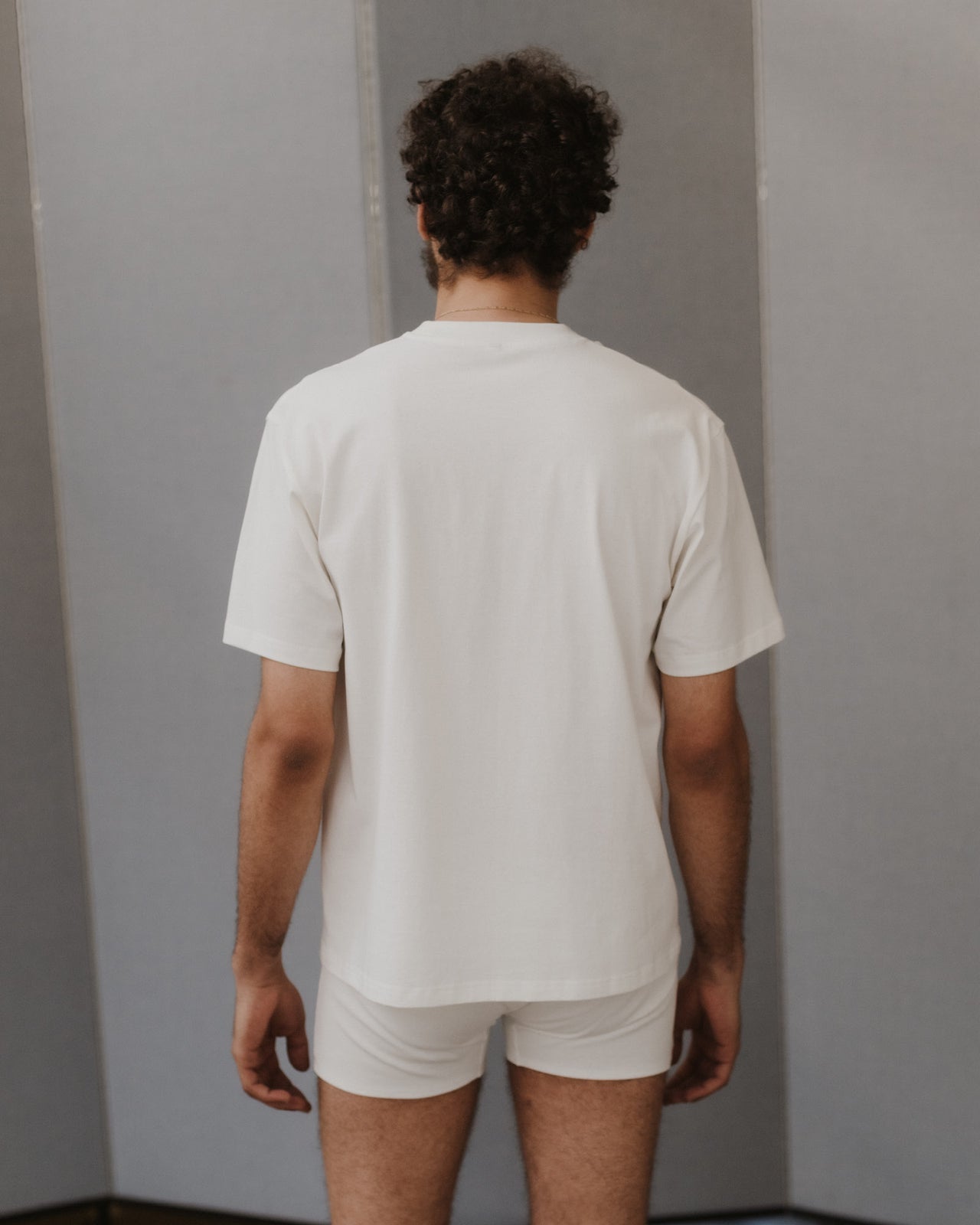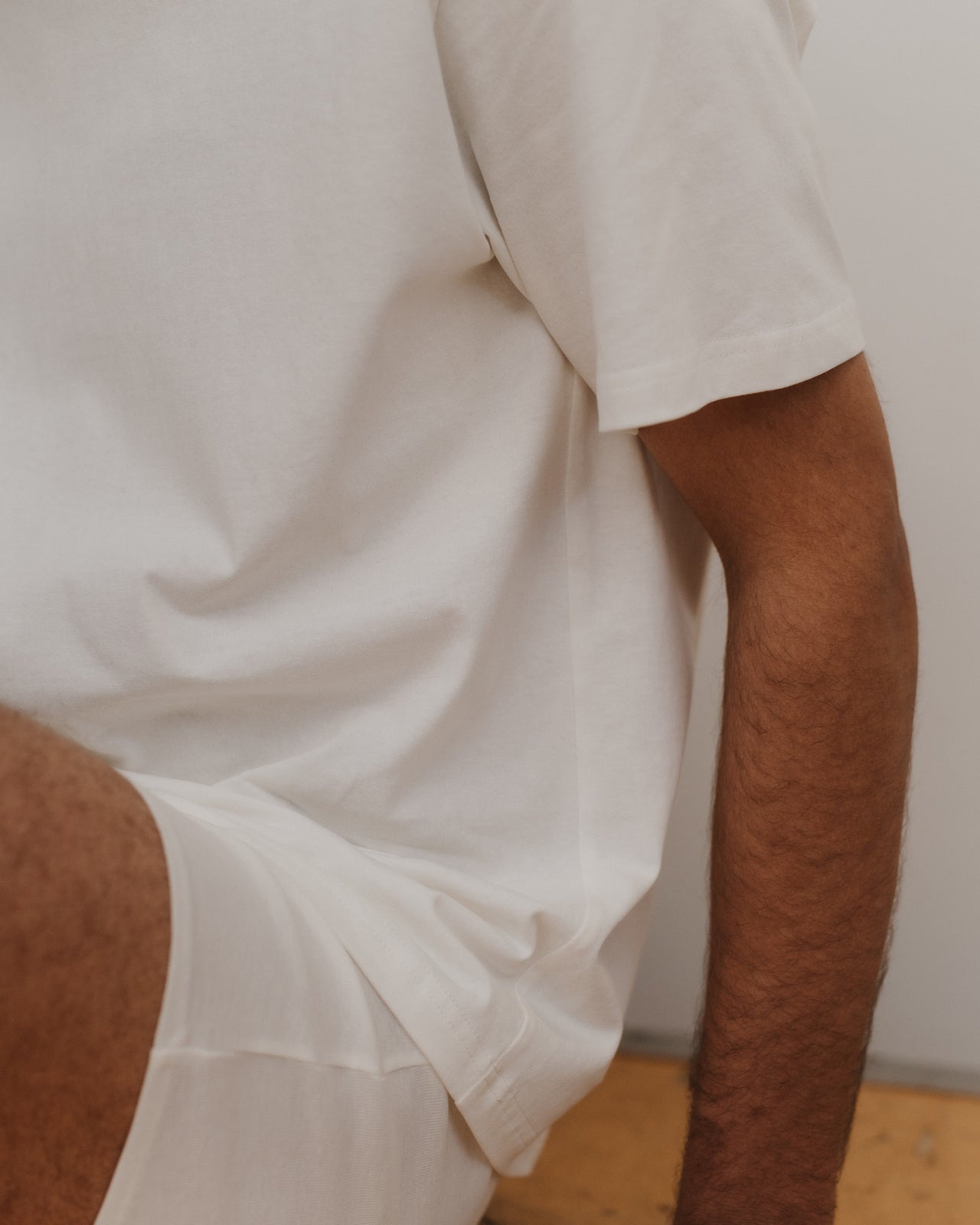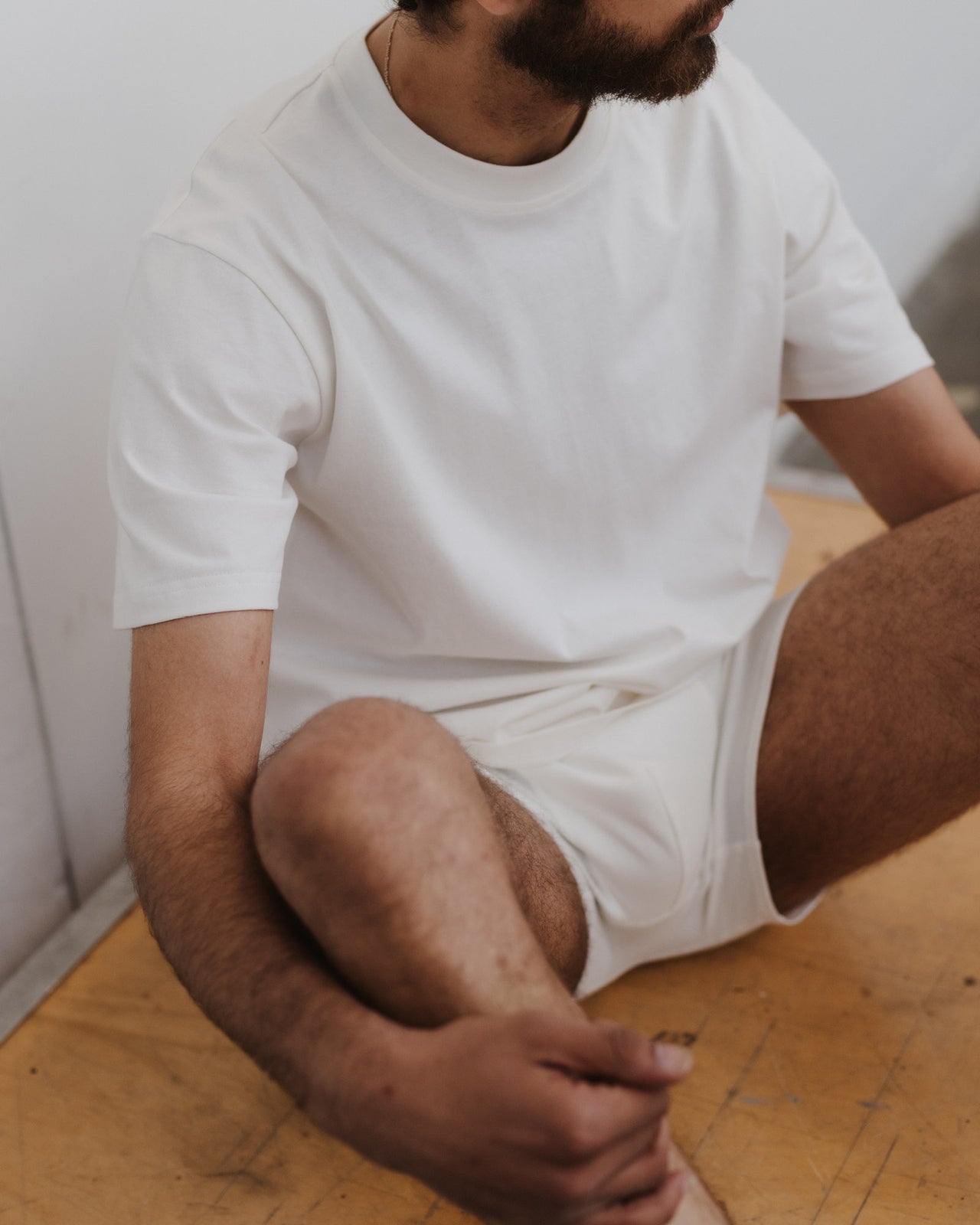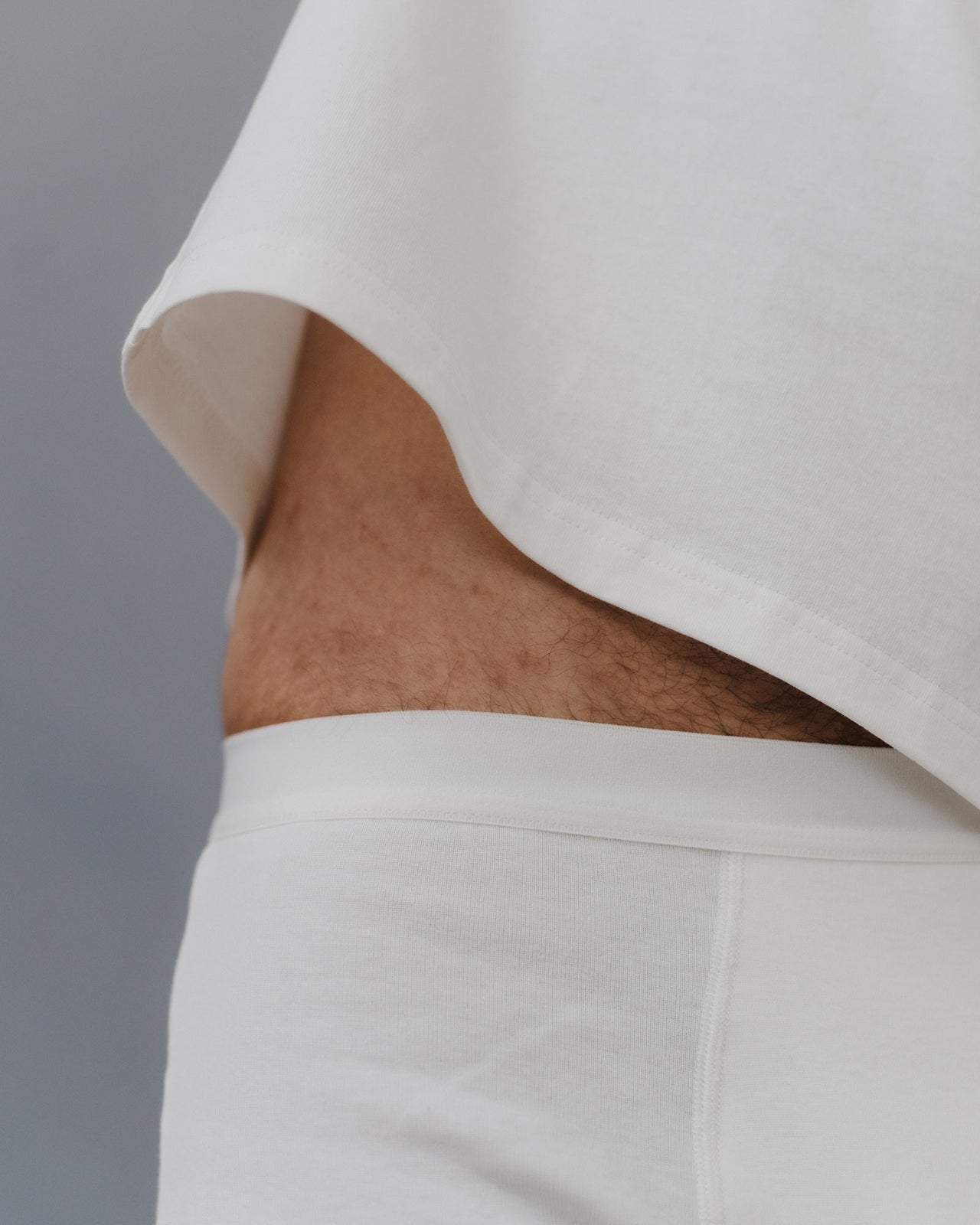Sizing chart
Measurements
- cm
- inch
Conversion Chart
| Size | EU | US | AU | JP |
|---|---|---|---|---|
XS |
34 |
0-2 |
8 |
100 |
S |
36 |
4 |
10 |
120 |
M |
38 |
6 |
12 |
140 |
L |
40-41 |
8 |
14-16 |
160 |
XL |
42 |
10 |
16-18 |
180 |
Close button on footer ?
Briar tee shirt - regenerative cotton jersey - undyed - regenerative-fabrics
Regular price
$265.00
Color
Undyed
Undyed
Basalt grey
Garnet orange
- L
Product Details
Regenerative cotton tee
Crewneck
Undyed
50% Regenerative Cotton 50% Recycled Cotton
Made in Portugal
Model wears a size S
Material
- Regenerative agriculture is the process of working with nature to restore degraded soils using a closed-loop system.
- This is done through various methods such as never leaving land exposed by using cover crops, doing crop rotation to introduce nutrients to the soil, low tilling of the ground like digging the soil to store more carbon dioxide, using compost, integrating livestock and intercropping by planting different crops next to each other. Agroforestry and silvopasture are also practical techniques used in regenerative farming where trees and grazing livestock are introduced on the farm.
- The practices implemented are dependent on climate, the local ecosystem and natural resources. There are no fixed practices, rather it is about adopting holistic principles of farming that improve soil health.
- Regenerative farming is beneficial from an environmental, economic and social perspective.
- It increases biodiversity, makes the soil more flood and drought resilient, has larger yields, enhances the habitat for wildlife and is getting investments from brands so farmers are getting support to implement these practices.
- Regenerative agriculture also improves the cleanliness of water and lessens pollution, as no pesticides are used. Increased nutrient levels in the soil also help store more carbon dioxide.
You may also like

